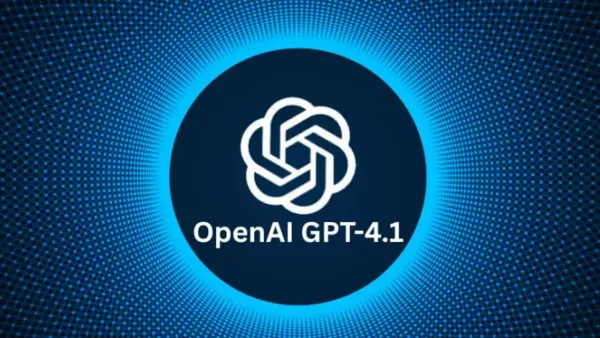
For ChatGPT users, OpenAI has officially introduced their potent new GPT-4.1 series, which includes the GPT-4.1, GPT-4.1 small, and GPT-4.1 nano. According to the business, this new generation offers significant improvements in comprehension of lengthier and more complicated discussions, instruction following, and coding. However, only paid users are able to utilize these features.

After an earlier release via API that started a month ago, the upgrade signifies the debut of OpenAI’s most sophisticated AI to date on ChatGPT. On May 14, OpenAI announced on X (previously Twitter) that ChatGPT Plus, Pro, and Team subscribers may now access its flagship GPT-4.1 model. GPT-4o, which OpenAI claims will progressively acquire certain enhancements from the newer models, will remain in use by free-tier users.
What Is Unique About GPT-4.1?
OpenAI claims that GPT-4.1 performs better than GPT-4o and its small counterpart in every important performance domain, especially when it comes to software engineering jobs and the execution of instructions. “These models outperform GPT-4o and GPT-4o mini across the board, with major gains in coding and instruction following,” OpenAI said in a blog post.
The substantially bigger context window, which can now hold up to 1 million tokens, is one of the most notable additions. This enables the AI to analyze and retain a lot more data than it did before. Furthermore, the knowledge cutoff date for GPT-4.1 is June 2024, which is more recent than GPT-4o’s October 2023 deadline.
OpenAI provided benchmark results that demonstrate a 10.5% increase in instruction following and a 21% absolute gain over GPT-4o in software engineering activities. Because of these enhancements, the model is perfect for real-world, useful applications like complicated software development, customer support, and writing aid.
Although benchmarks provide insightful information, we trained these models with an emphasis on practical applications. We were able to optimize these models for the activities that are most important to their applications via close cooperation and participation with the developer community,” OpenAI said.
There are several versions that are lighter and faster.
In addition to the regular GPT-4.1 model, OpenAI has released the GPT-4.1 small and GPT-4.1 nano, which are intended to provide great performance at lower latency and cost.
• GPT-4.1 tiny is a viable option for applications requiring speed and efficiency since it reduces latency by about 50% and is 83% more affordable than GPT-4o.
• OpenAI’s most cost-effective and lightweight solution, the GPT-4.1 nano, is perfect for easier tasks like text categorization or autocomplete.
According to OpenAI’s blog post, “these models push performance forward at every point on the latency curve.”
GPT-4.1: Who Can Access It?
Only ChatGPT Plus, Pro, and Team users may now access the new GPT-4.1 series. Free users will continue to utilize GPT-4o, which will progressively gain from some of the updates made to the more recent model, but they will not have access at this time.
GPT-4.1 is also accessible to developers and companies via API. To make the new models more affordable, OpenAI has drastically lowered the price. While the price of GPT-4.1 nano starts at only $0.10 per million tokens, the input expenses for GPT-4.1 currently start at $2 per million tokens. Discounts for quick caching have also been raised to 75%, which helps lower expenses for frequently asked inquiries.
Eliminating Older Models
OpenAI is discontinuing some of its older versions as it releases GPT-4.1. On April 14, 2025, the GPT-4.5 Preview—which was first released just for research—was taken out of the API. Additionally, ChatGPT Plus has been powered by the original GPT-4 since March 2023, although it has been formally terminated.
Many of GPT-4.1’s features will eventually be included into the GPT-4o experience, even if it does not completely replace GPT-4o inside the ChatGPT interface. Accessing GPT-4.1 via API or purchasing a premium ChatGPT subscription are currently the preferred options for those looking for optimal performance.
GPT-4.1 represents a major advancement in the development of generative AI, making it more potent, effective, and useful for practical applications as OpenAI keeps improving and scaling its models.